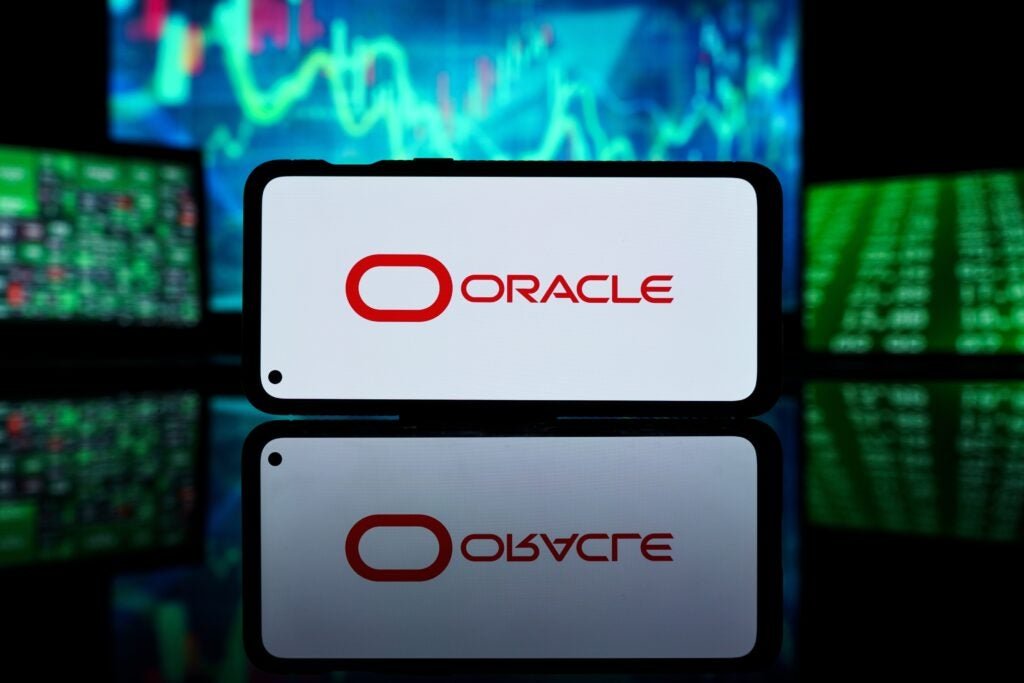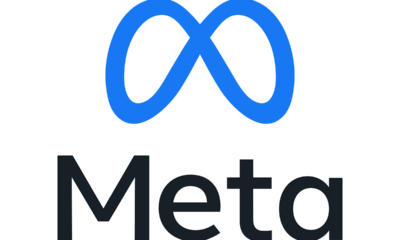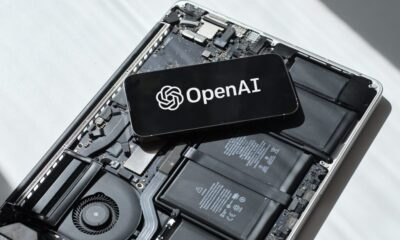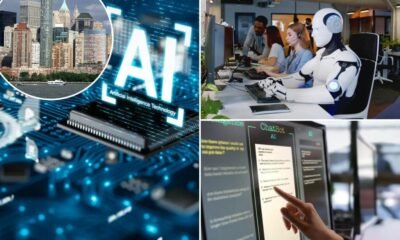Tools & Platforms
AI Tools Flood Workplaces As Employees Face Mixed Signals

Uncertainty leaves employees torn between hiding and using AI tools in the workplace.
getty
AI seems to be everywhere at work these days. Unfortunately, not everyone feels free to admit that they’re using it. A new survey from WalkMe shows nearly half of employees hide their use of AI tools, fearing colleagues or managers will judge them as lazy or less competent. Yet at the same time, many employers are pressuring teams to adopt artificial technology to boost productivity. It’s a paradox that leaves workers feeling stuck and highlights a growing culture of “AI shame” in the workplace.
This tension between corporate pressure and personal discomfort points to a deeper workplace challenge. Employees are eager to experiment with AI tools, but unclear policies and a lack of training fuel secrecy instead of confidence. While U.S. workers hide their AI use to avoid judgment, a study of Chinese students published in the journal Science of Learning suggests the opposite problem. Guilt and obligation push them to use AI tools even when they don’t enjoy them. Together, these findings show that shame, not technology, may be the most significant barrier to AI’s success at work.
Let’s take a closer look at the survey results to see why AI shame matters for companies and how leaders can break the cycle.
AI Shame Is Spreading At Work
AI shame can be defined as the fear of stigma around using AI at work. Instead of being seen as resourceful, employees worry they will be judged for leaning on technology to get things done. The WalkMe survey shows how common this has become. Nearly half of employees (48.8%) say they conceal their use of AI tools. Among executives, the number is even higher, with 53% admitting they hide their reliance on AI.
The secrecy goes beyond a simple lack of disclosure. Some workers admit to passing off AI-generated work as entirely their own. Behind this behavior is a mix of fears:
- Fear of being labeled as lazy: Workers worry colleagues will see AI use as taking shortcuts
- Concern about appearing less competent: Employees fear being viewed as less skilled than peers who don’t rely on technology
- Worry about job security: Many fear being seen as replaceable if they acknowledge using AI
This reluctance to be open about AI use not only affects individual careers but also slows down the ability of companies to share best practices and innovate.
Employees Face A No-Win Situation
While employees are hiding their use of AI, companies are often pushing them to adopt it. Many organizations have rolled out AI tools like ChatGPT, Copilot and Gemini with the expectation that workers will complete tasks faster and more efficiently. Leaders see AI as a way to boost productivity and gain an edge in a competitive market.
For employees, this creates a catch-22. If they embrace AI openly, they risk being seen as lazy, unskilled or even replaceable. If they avoid it, they risk falling behind or being labeled as resistant to change. The result is a paradox that leaves workers feeling trapped.
This situation plays out across every level of the organization:
- Entry-level employees worry about proving themselves without looking like they are cutting corners
- Managers struggle to balance efficiency with credibility
- Executives admit to hiding their reliance on AI, sending mixed signals to the teams they lead
China Experiences AI Shame Differently
In China, the experience of AI shame is reversed. Research shows that many university students feel guilt and an obligation to use AI tools, even when they don’t want to. The study found that guilt-driven motivation was central to students’ decisions about whether to use AI. In a culture that emphasizes saving face and meeting expectations, students were less motivated by curiosity or enjoyment and more by fear of letting others down. Competence mattered more than autonomy or personal choice.
While the context is different, the underlying theme is the same. Social pressure, whether it takes the form of hiding in the U.S. or guilt in China, can distort how people approach AI. Instead of using it with confidence, individuals are driven by fear. That suggests shame, in all its forms, may be one of the biggest barriers to meaningful adoption.
AI Shame Creates Ripple Effects
AI shame is more than an employee concern. It creates ripple effects that weaken productivity, collaboration and innovation across the workplace:
- Reduced knowledge sharing: Employees are less likely to share AI strategies that could help colleagues work smarter
- Difficulty scaling best practices: Secrecy makes it harder for organizations to identify and scale practical approaches
- Productivity paradox: Workers believe AI can improve performance, yet tools often slow them down due to uncertainty about proper usage
- Shadow AI risks: Employees turn to unsanctioned tools when unclear about what’s allowed, raising data security and compliance concerns
- Eroded trust: Hidden AI use can damage the relationship between employees and management
Without clear training and guidance, employees are left to experiment on their own, which often leads to frustration and missed opportunities.
Leaders Can Break The Cycle
Leaders play a critical role in shifting how employees view AI. Here are three key strategies:
- Normalize AI use: Frame AI as a workplace skill rather than a shortcut. When leaders model transparency about their own AI use, they signal that the technology enhances performance rather than indicating weakness
- Invest in training and clear policies: The survey shows that only a small share of workers receive meaningful AI guidance. Companies that provide hands-on training and clear policies help employees feel confident instead of secretive
- Highlight positive examples: Share stories of how AI has improved productivity or freed up time for strategic work. Creating an environment where experimentation is encouraged replaces fear with confidence
By implementing these approaches, organizations can unlock the full potential of AI tools and transform workplace culture around technology adoption.
AI isn’t the real barrier to progress in the workplace. The deeper challenge is the shame and confusion that surround its use. Employees are caught in a no-win situation, pressured to adopt AI tools yet reluctant to admit it. Unless leaders address that tension with clear policies, training and openness, companies risk losing the very gains they hope to achieve. The future of AI at work will be shaped not only by the technology itself but by whether organizations create a culture where people use it with confidence instead of fear.
Frustrated by a corporate environment that lacks clear direction or flexibility? Subscribe to Corporate Escape Artist for strategies to design a career on your terms.
Tools & Platforms
AI’s New Cloud King: Oracle’s Rally Could Rewrite ETF Playbooks – ARK Next Generation Internet ETF (BATS:ARKW), Global X Artificial Intelligence & Technology ETF (NASDAQ:AIQ)

Oracle Corp’s ORCL shares soared over 40% on Wednesday, a day after posting its earnings powered by booming demand for AI infrastructure, pushing CEO Larry Ellison ahead of Tesla Inc TSLA scion Elon Musk as the world’s wealthiest individual.
Beyond the headline wealth change, the move has considerable implications for ETFs, showing how AI infrastructure is becoming more integral to broad-market and thematic funds alike.
Oracle’s profits highlighted the company as a prime supplier of data center space and cloud computing for AI use. With an eye-popping $455 billion AI services backlog and multi-billion-dollar contracts such as providing OpenAI with 4.5 gigawatts of energy to power ChatGPT, Oracle made it clear to the world that it is more than a software behemoth now.
Impact On ETFs
For holders of broad-market ETFs, Oracle’s rise comes with an immediate impact on portfolio weightings. Sector-specific ETFs like Technology Select Sector SPDR XLK and Vanguard Information Technology ETF VGT stand to gain, as Oracle moves higher in the ranks of the most heavily weighted tech names. Both funds are up around 1.5% on Wednesday.
Thematic ETFs on AI, cloud, and next-generation technologies are also being rewired. If Oracle crosses $1 trillion in valuation, it joins a very exclusive group. That milestone might spark reappraisals by active managers and ETF issuers alike, potentially creating new “AI infrastructure” baskets or raising its inclusion in existing thematic funds.
Others like Global X Cloud Computing ETF CLOU, WisdomTree Artificial Intelligence & Innovation Fund WTAI, and ARK Next Generation Internet ETF ARKW might have to change exposure to reflect Oracle’s new leadership in AI infrastructure.
The ripple effects even extend to ETFs with broader innovation themes. For example, both iShares Exponential Technologies ETF XT or Global X Artificial Intelligence & Technology ETF AIQ track companies positioned to benefit from AI adoption.
Oracle’s repositioning as a critical AI infrastructure player makes it harder for ETF managers to overlook.
The Bigger Picture For ETF Investors
Investors seeking to capitalize on the AI boom have several options for gaining diversified exposure to the companies driving this growth, rather than betting on individual stocks.
This episode shows a larger trend: AI-fueled growth is no longer the exclusive domain of mainstream software or chip stocks. ETFs are keeping pace with the industry, providing investors with vehicles to harness both broad-market tech appreciation and thematic exposures in AI, cloud, and enterprise infrastructure.
Oracle’s explosive growth shows how the fortunes of a single company can cascade through dozens of ETFs, affecting flows, weightings, and sector performance.
Read Next:
Image: Shutterstock
Tools & Platforms
Sevierville to use new AI pavement management technology for street maintenance

SEVIERVILLE, Tenn. (WVLT) – Sevierville will begin using new pavement technology for its pavement and infrastructure.
The city said the new technology will provide vibration and camera data and will be able to automatically report street and driving conditions to the city.
“The comprehensive data helps tailor future paving plans to ensure the most efficient use of funds, and custom work orders can be readily created based on the condition data, making pavement preservation and repair more manageable and ensuring the most efficient use of tax dollars,” said the City of Sevierville in a press release.
The city said this will allow them to assess the conditions of their current roadways and be able to use AI technology to make suggestions for how to best treat the pavement.
The new technology will come from Roadway Management Technologies (RMT) a company offering performance tracking solutions.
Copyright 2025 WVLT. All rights reserved.
Tools & Platforms
Is The Tech Market Going Nuts? – JOSH BERSIN

Today we learned that OpenAI just signed a five-year deal with Oracle to spend $300 Billion on data centers (this is five-times Oracle’s annual revenues today), more or less doubling Oracle’s annualized revenue in one transaction. Oracle’s stock went up about 35% or more.
This $300 billion deal can now be added to more than $450 billion cited by Meta, Amazon, Microsoft, and Google to total almost $750 billion allocated this year toward AI infrastructure alone. If you add the cost of engineering talent and energy to be built, it’s probably more like $800 billion. (Meta’s new Louisiana data center is the size of Manhattan.)
If you consider that US GDP is around $30.3 trillion (expected to grow at 1.7% per year), this means that almost 2.5-3% of our entire US GDP has been allocated to AI infrastructure this year.
I’m not sure if we’ve ever committed so much capital to one activity in one year since the Apollo Space Program in 1964. Even the Manhattan Project, which developed the Atomic Bomb to end World War 2, was only about .4% of GDP.
I’m not saying this is too much money, since these are private companies committing funds from their shareholders. But the bet these companies are taking is that somehow, over the coming decades, some multiple of 2.5% of GDP is going to come back as revenue to providers around the business of AI.
This next week is the big HR Technology Conference in Vegas, and I”m going to be keynoting on Thursday to give you an overview of the space. It’s quite astounding how quickly we went from “What is AI?” to “Let’s implement AI as fast as we can” in virtually every company I talk with.
Just a few of the things going on to talk about next week.
- Workday announced the acquisition of Paradox, cementing their move into high-volume recruiting. This complements the company’s acquisition of Hiredscore, and further increases Workday’s AI bench of talent. At the same time the class-action lawsuit (Mobley vs. Workday) is moving ahead, threatening the company with some kind of major settlement for AI-induced age discrimination in hiring.
- ServiceNow, the most “AI centric” of the big vendors, announced its Zurich release, which includes new dev tools for IT departments (and users), more features for data management and security, and Agentic Playbooks to help companies understand how to build human to AI workflows.
- WorkHuman, the billion dollar employee recognition company, introduced its Human Intelligence system, which gives companies highly reliable skills and capability inferences across the workforce, based on peer to peer recognition and feedback,
- Eightfold introduced its end-to-end toolset for high-volume recruiting, including an AI-interviewer (infinite scale for high volume job openings), Candidate Concierge (candidate chat), and new workflows for its talent intelligence and applicant tracking system,
- SAP SuccessFactors announced the acquisition of SmartRecruiters, and you can expect to see more about SAP and our Galileo at SAP Connect in October,
- UKG has announced and is now delivering a wide array of AI agents for its massive customer base of front-line worker companies. These agents help with shift scheduling, real-time pay, payroll reconciliation, shift sharing, and all sorts of important but complex scheduling issues faced by the 70% of workers who work in retail, hospitality, healthcare, transportation, entertainment, and other front-line positions.
- OpenAI announced its Jobs platform and strategy to develop and certify AI skills.
- Many dozens of new companies have been announcing new agentic features including Microsoft, Arist, Cornerstone, ADP, Lightcast, Draup, SHL, Techwolf, Visier, Beamery, Gloat, Reejig, Deel, HiBob, and many others.
- We will be announcing a major new set of features in Galileo, and also highlighting that we have more than 600 companies now using our intelligent Agent for HR.
Where is all this going?
As you’ll hear about next week, Agentic AI in HR is here now, and this means our HR organizations are going to get smarter, more integrated, and probably smaller. The tradition ratio of 100:1 employee to HR ratio could go up to 150-200 over the next few years, and that means HR professionals will become Superworkers, with even more opportunity to add value.
The big HCM vendors (SAP, Workday, Oracle, ADP, Dayforce, UKG) are all heavily investing in AI now, and they’ve hired and developed strong AI teams internally. Each is focused in different areas, so most of you will start to see many AI options from your core providers. In the complex areas like talent acquisition, L&D, and employee experience.
Several things I hope to share next week. First, I’ll try to give you an overall sense of how to manage this proliferation of new tools, and share what we’ve learned about AI transformation process and governance. Second, I’ll share what we’ve been learning about in job redesign and task analysis, an important enterprise discipline in large AI transformations. And third, I’ll be showing you more about the culture and leadership changes we can expect that will help our companies transform more effectively.
I’d say there’s a lot of fast-moving activity taking place (witness Salesforce’s layoff of 4,000 people last week), but for many of you this is a new career in rethinking jobs, organization structure, and skills development as we all move to become what we call Superworker companies.
There will be many announcements and I’ll cover as many as I can, but just strap yourself in. When the technology industry invests almost 3% of US GDP in AI, we are all going to be flooded with tools, systems, and new toys to play with.
Additional Information
Galileo Learn™ – Get Ahead. Stay Ahead. A Revolutionary Approach To Corporate Learning
Can AI Beat Human Intuition For Complex Decision-Making? I Think Not.
The Road To AI-Driven Productivity: Four Stages of Transformation
-

 Business2 weeks ago
Business2 weeks agoThe Guardian view on Trump and the Fed: independence is no substitute for accountability | Editorial
-
Tools & Platforms4 weeks ago
Building Trust in Military AI Starts with Opening the Black Box – War on the Rocks
-

 Ethics & Policy2 months ago
Ethics & Policy2 months agoSDAIA Supports Saudi Arabia’s Leadership in Shaping Global AI Ethics, Policy, and Research – وكالة الأنباء السعودية
-

 Events & Conferences4 months ago
Events & Conferences4 months agoJourney to 1000 models: Scaling Instagram’s recommendation system
-

 Jobs & Careers2 months ago
Jobs & Careers2 months agoMumbai-based Perplexity Alternative Has 60k+ Users Without Funding
-

 Podcasts & Talks2 months ago
Podcasts & Talks2 months agoHappy 4th of July! 🎆 Made with Veo 3 in Gemini
-

 Education2 months ago
Education2 months agoMacron says UK and France have duty to tackle illegal migration ‘with humanity, solidarity and firmness’ – UK politics live | Politics
-

 Education2 months ago
Education2 months agoVEX Robotics launches AI-powered classroom robotics system
-

 Funding & Business2 months ago
Funding & Business2 months agoKayak and Expedia race to build AI travel agents that turn social posts into itineraries
-

 Podcasts & Talks2 months ago
Podcasts & Talks2 months agoOpenAI 🤝 @teamganassi





















